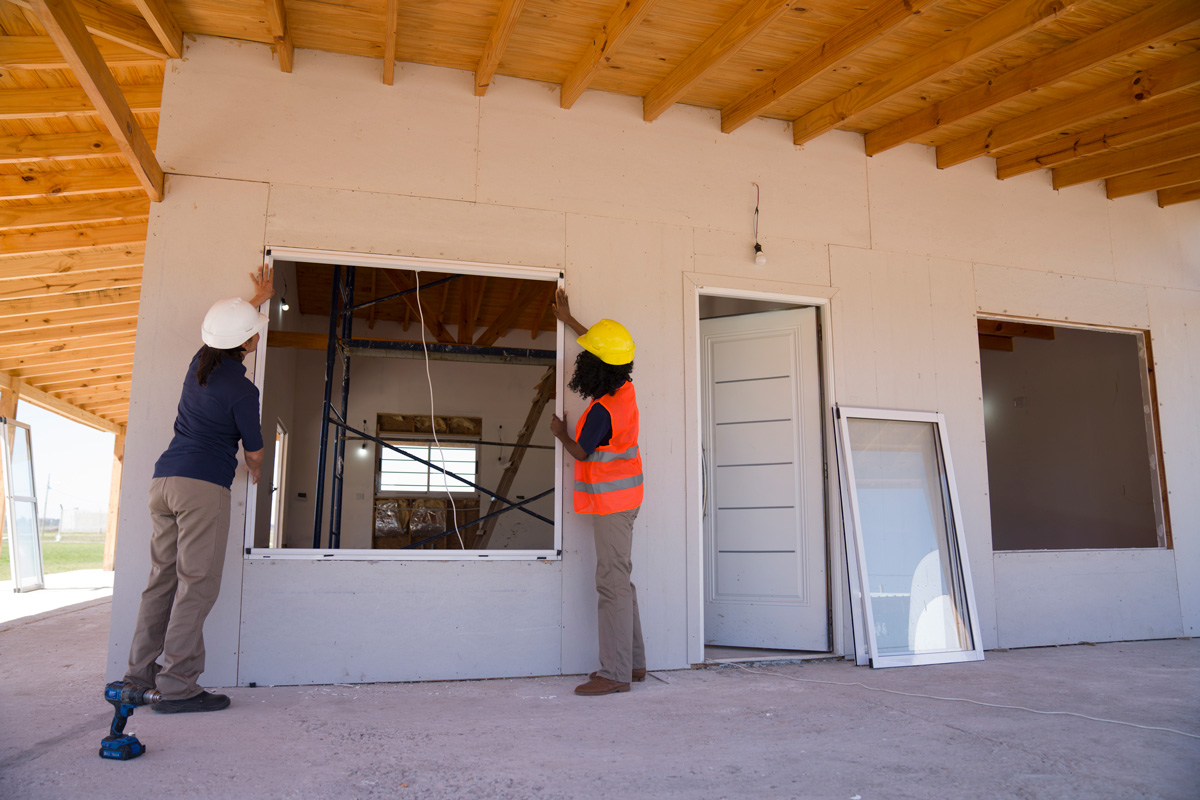The cost to move a window in an existing wall fluctuates depending on the materials used and the complexity of labor. The average price ranges from $1000 to $5000 per window in the U.S. This project requires different factors: framing, siding, rerouting, and finishing.
Relocating your window comes with perks, but several services will be involved. These might take you by surprise. To help you get a clear picture of how much money you will spend, read on as we provide the breakdown, tips, and other details about this project.

Window Cost Factors To Consider
We sometimes add affiliate links and content that was curated and created by our team with the help of advanced ai tools to help showcase the best design styles.

Here are the factors affecting the cost of moving your window.
Window Location
The distance between the present and the intended new location of a window determines whether you have to rent a boom lift to transport the window. A cherry picker will lift a window unit harmlessly, and the contractor can efficiently install it on the second or higher floor. Boom lift rental companies charge $205 to $400 per day.
As a result, same-level relocation is more practical. However, in areas like bedrooms or bathrooms, you need to protect your privacy and reduce sun glare. Placing a frosted glass sticker on your window will solve these concerns.


View this window glass sticker on Amazon.
Framing
Framing is the structural backbone of your window. Whether wooden, vinyl or aluminum framing, its rebuilding values from $100 to $400 on average.
Investing in good quality tools is beneficial for any home improvement project. To measure the dimension of your window unit, you can use a level. With its accuracy, the relocated window will not be off-center.


View this magnetic torpedo level on Amazon.
Drywall Installation
To create a new opening, the current drywall must be removed. In Bloomington, Indiana, the average cost for drywall debris disposal is between $0.30 to $0.34 per square foot.
Afterward, along with screws and studs, drywall forms the wall structure of the previous window opening. It is a low-cost option made from a mixture of gypsum. Installing drywall with half-inch thickness costs $1.30 to 2.02 per square foot.
Self-drilling drywall anchors or screws easily penetrate gypsum wallboard regardless of its thickness. Along with hanging hardware, use these anchors to place picture frames, artwork, or even a mirror on the wall. As a result, the old window opening that you will turn into a new wall can still be functional.


View these drywall screws on Amazon.
Insulation
Closing the opening requires wall insulation. Insulation improves energy efficiency. Likewise, it defends your house against moisture and extreme temperature. A lightweight yet strong insulation with engineered foils on both sides is a perfect radiance barrier. You can expect to pay $0.12 to $0.16 per square foot for batt and roll insulation with an R-11 value.


View this reflective insulation roll on Amazon.
Trim and Siding Repair
Trim and siding are the outermost covering of a wall. They do not only protect other elements within a wall but also add style to the home exterior. Repairing siding within the old opening varies based on the type of siding. For instance, you will spend $2 to $4 for a vinyl or stucco siding. Aluminum, fiber cement, wood, brick, and stone siding repairs have higher prices.
In contrast, window trim is less expensive at $.50 to $10 per foot. To save labor costs, you can install it without the need for a professional.
Using a PVC painter's tape, you can safely keep your window unit before plastering and finishing. It easily adheres to exterior surfaces such as window glass, trim, and siding. Even after two weeks, you can remove it without leaving damage or sticky residue.


View this painter's tape on Amazon.
To learn more, read this post: Should You Replace Windows Or Siding First?
Wall Cavity Utilities
During home construction, wiring and plumbing are placed behind certain walls. Thus, if the wall location has existing utilities, it is important to reroute those to prevent any electrical or water problems.
Installing new electrical wiring costs $3 to $5 per square foot on average. If the walls you need to work on are within 100 square feet, you will pay between $300 and $500. This includes wires, outlets, panels, switches, labor, and miscellaneous supplies. Hire a qualified electrician to ensure safe electrical work.
Meanwhile, the price of rerouting a single pipeline ranges from $650 to $1,500 depending on the length and placement.
You can use a digital stud finder to accurately and quickly detect metal pipes and live AC wires anywhere in your wall. It comes with a large LCD and audio alarm for easy use. This will reduce errors and additional costs during construction.


View this stud finder on Amazon.
Structural Engineer Design
The new opening for the window affects the shear strength and structural load paths. This means that you must hire a skilled structural engineer to check the framing and wall support of the intended wall for the window relocation.
Older homes are more challenging compared to the new ones. Damaged trim and insulation and architectural heritage preservation are a few of the contractors' reasons to increase their rates for older homes.














move kitchen window over and make the window i have in the garage smaller thank you please respond back
Great breakdown. Thanks!